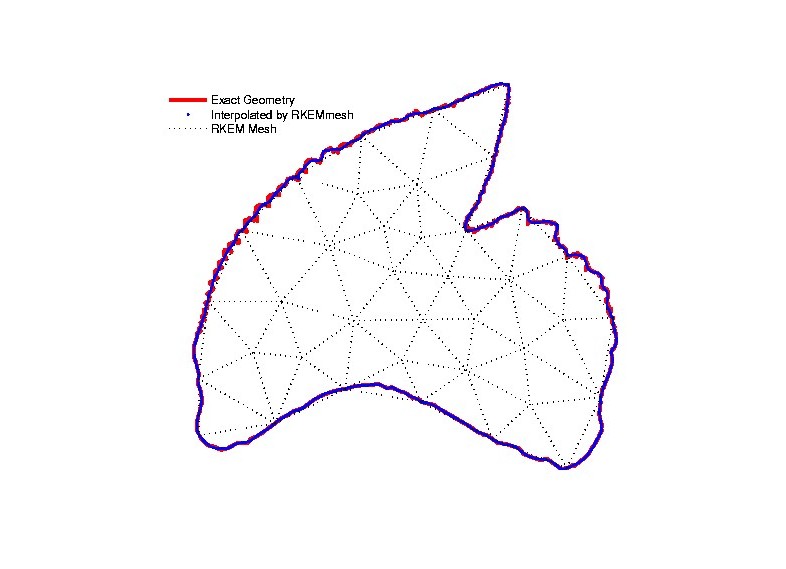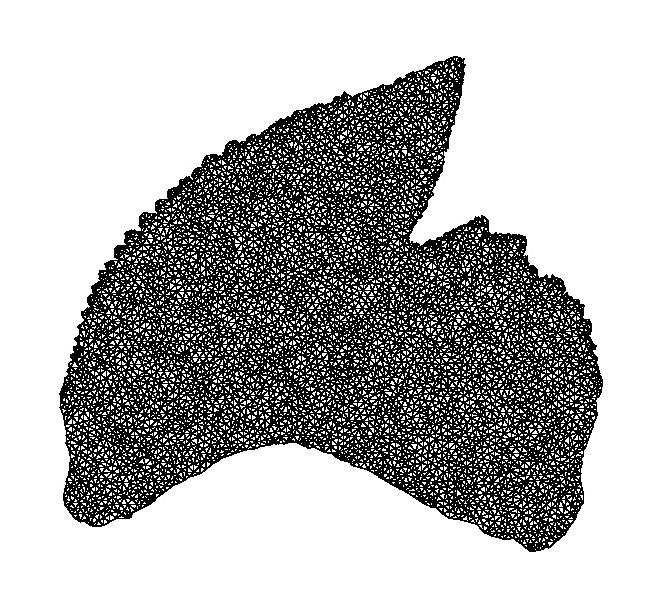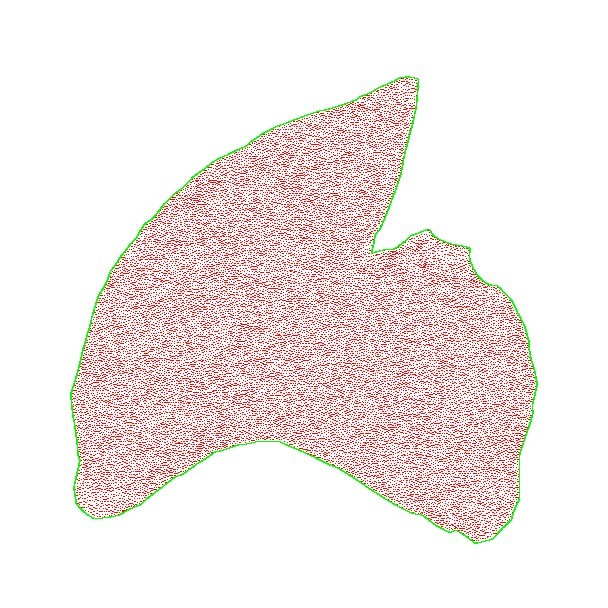
Depending on the application, one my be interested only in boundary or surface representations of an object. This might happen, for example, in computer graphics. On the other hand, to perform analysis on the object using finite elements, or some other method, the entire volume must be represented.
The representation of discrete point sets is a key feature of our approach. The following sequence of images represent the boundary representation of a tiger shark tooth. The first dense mesh is obtained from a triangularization of an 818 point digitization of the image of the actual tooth. The next image represents a single RKEM triangle representation of the tooth. It is remarkable that a single triangle can capture a large degree of the gross shape of the tooth. The last image represents a 24 boundary node RKEM representation. Note that even the fine detail of the serrations on the left edge are resolved!




The same basic methodology used for surface representations can be used for volume representations, but one must have points in the interior of the object. For cases where the input data set only contains boundary information, e.g. CT or MRI scans, the interior points must be generated. The follwoing image depicts the volume representation of the shark tooth.
